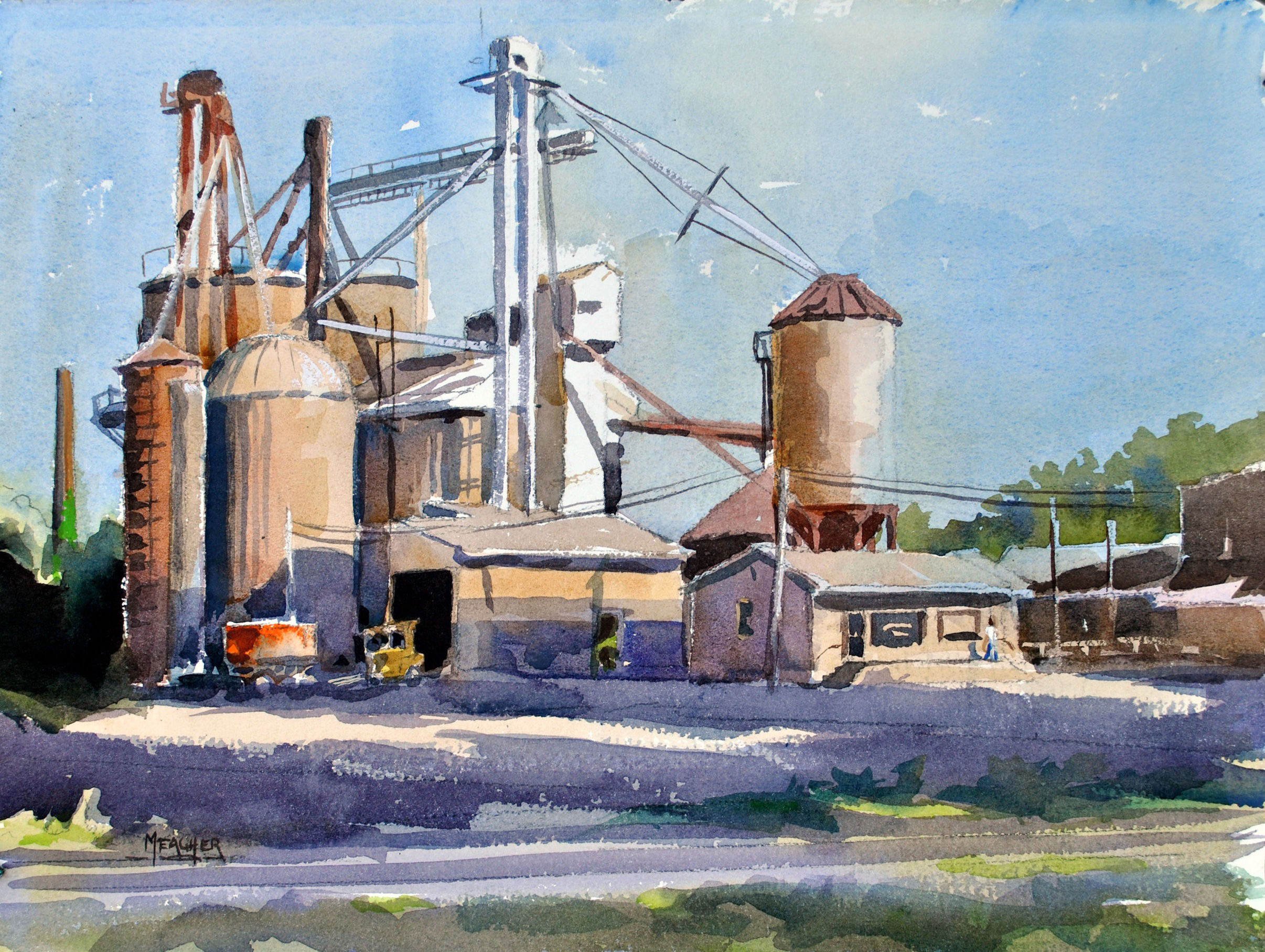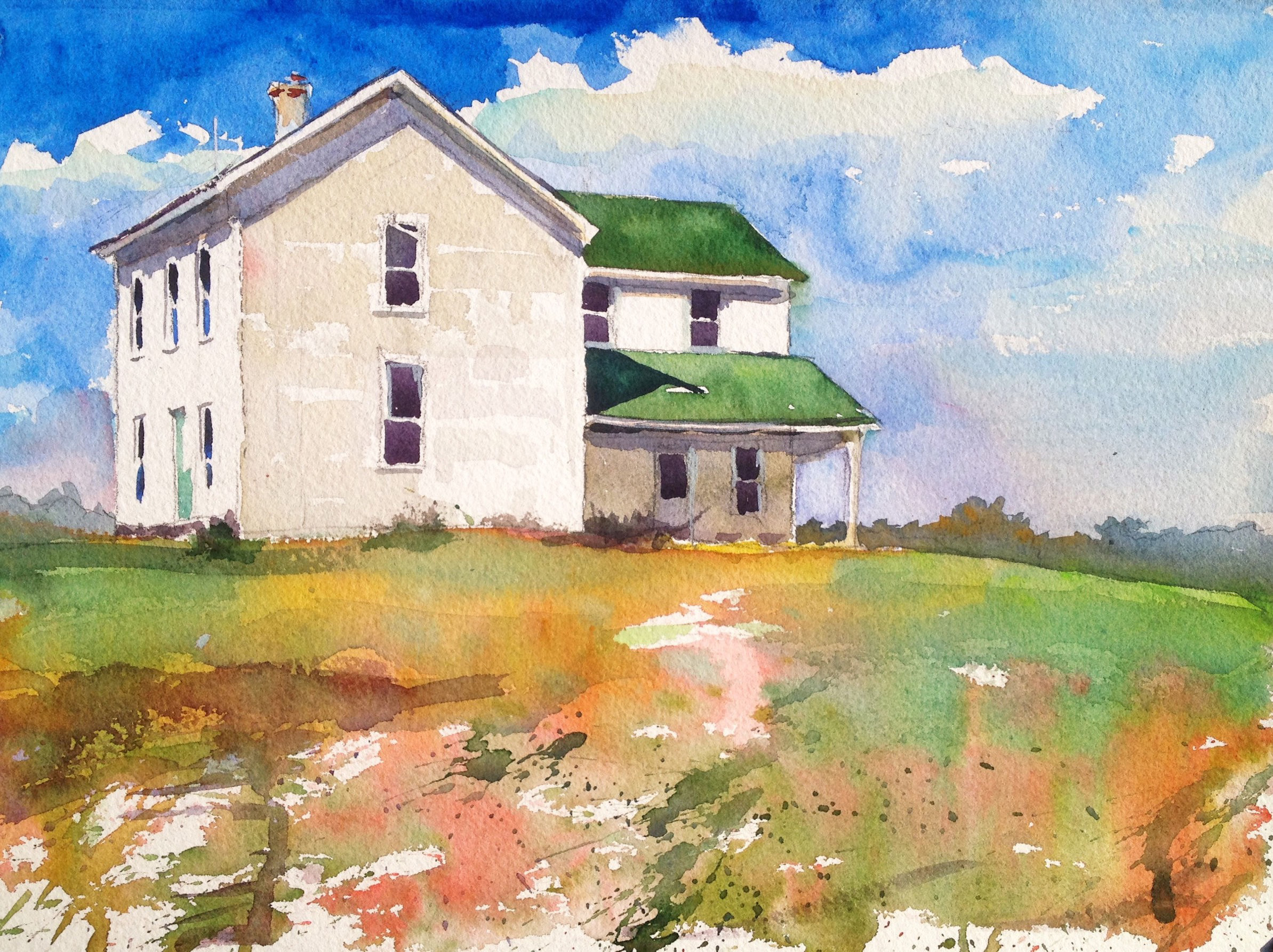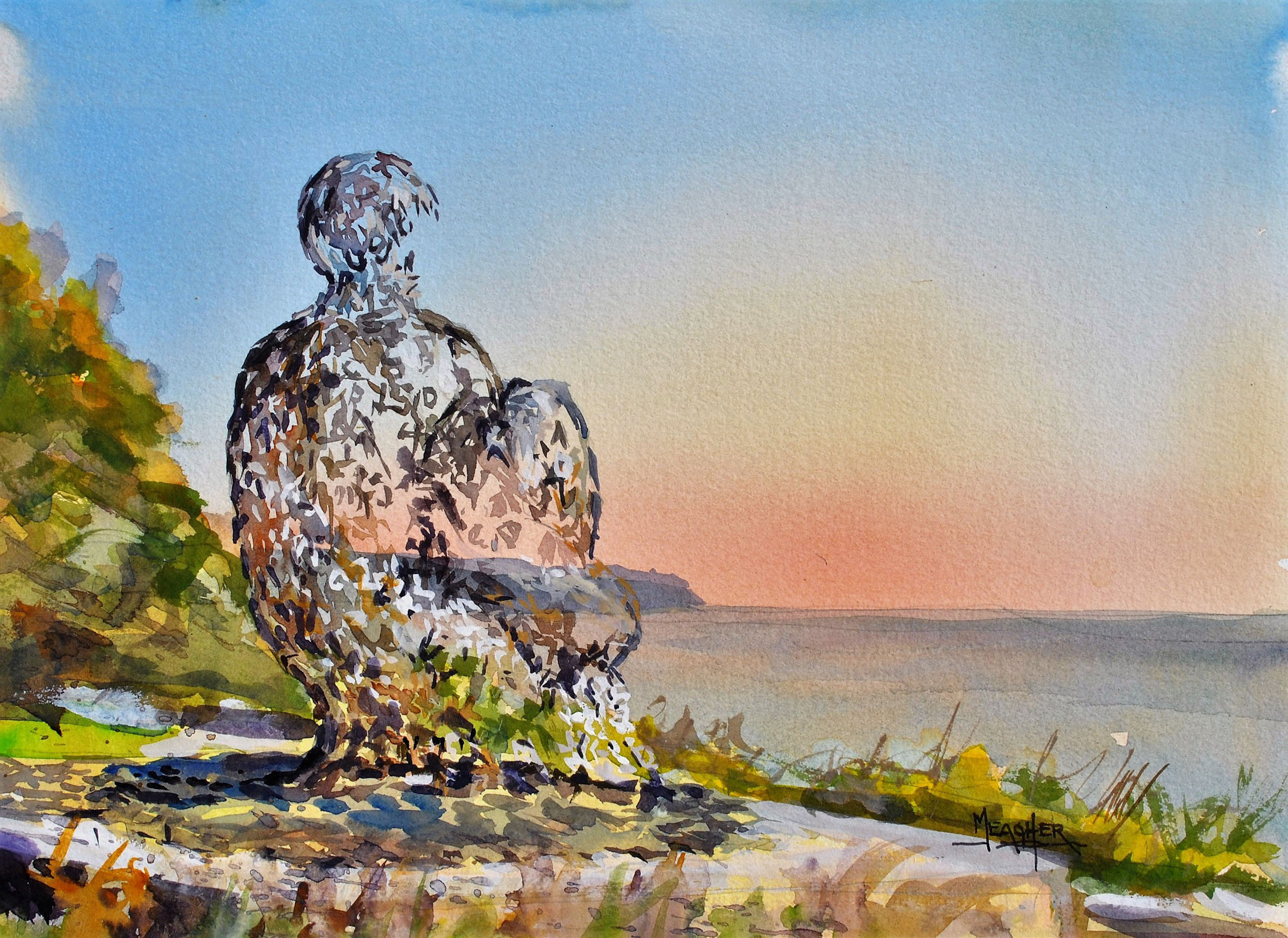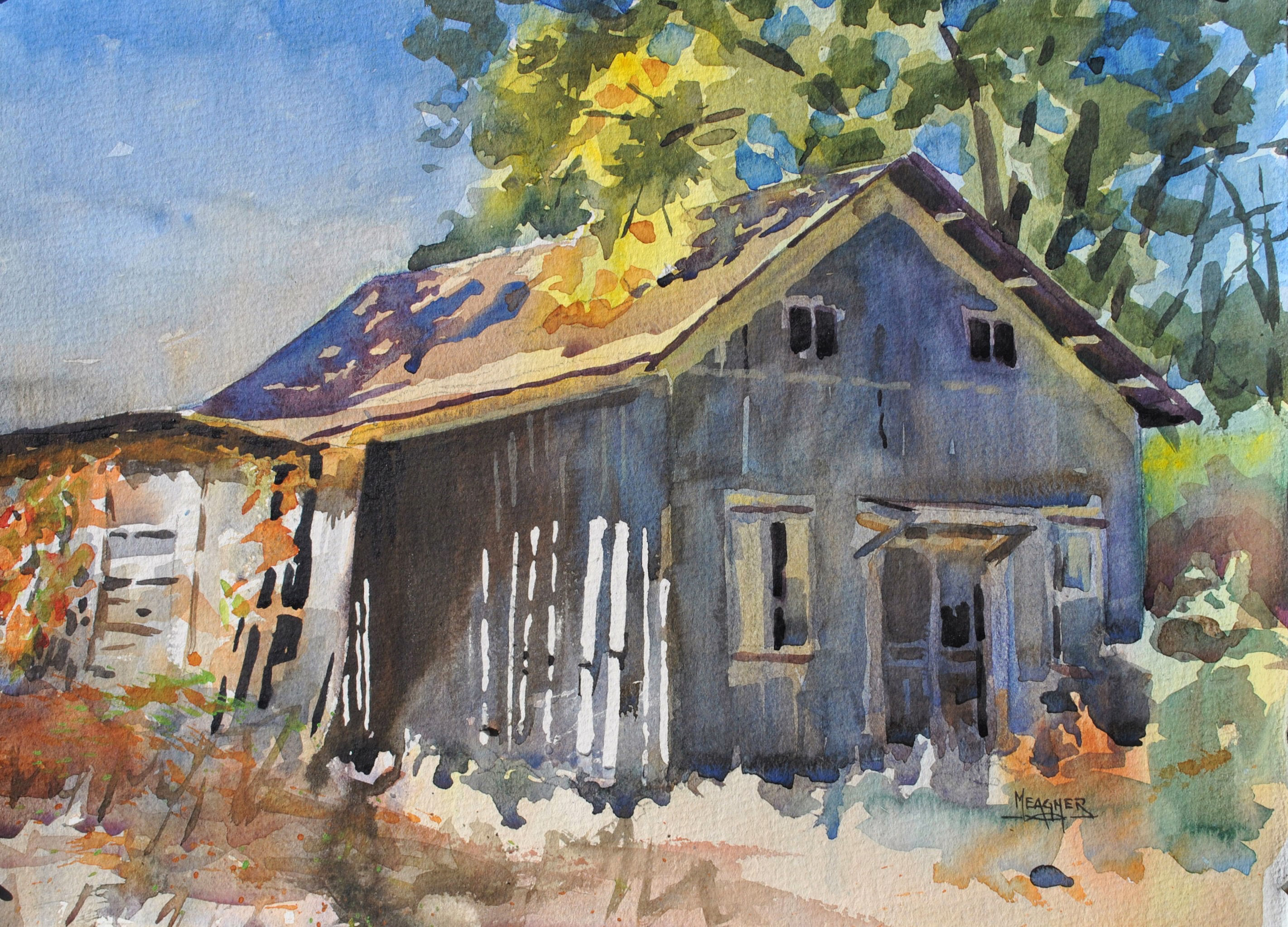Spencer Meagher started drawing at age 8, and spent 16 years as a draftsman at a manufacturing company, designing fuel pumps and water pumps. Drawing is in his blood.

“My mom encouraged me when I was young,and got me whatever supplies I needed,” he says. “I started with watercolor in high school, and stuck with that for several years. But you find a gal, get married, have children, and it gets hard to find the time to do it and pay the bills. I did take a few watercolor workshops, and each one escalated my painting ability greatly. I’m a big believer in the idea that if you watch someone painting, you pick it up much faster.”

Meagher is still sharpening his skills. “It’s about practice, practice, practice,” he says. “It’s something you can never get enough of. I try to discipline myself to do more sketching. I carry a sketchbook and work at it five or 10 minutes at a time. The key is to draw whatever appeals to you. Breed a familiarity with a subject. I knew a wildlife artist who could draw ducks in any position because he knew them so intimately. It was engrained in his mind what they would look like in any position, doing anything. I’m trying to draw people now, because I want to bring them into my paintings. So I loosely render people and put them in to add life. A few years ago I would have struggled with that because I really didn’t understand human anatomy.”

Keeping It Simple
“People are always commenting on my drawing,” he says. “I have the ability to draw really fast and get into it. I may spend no more than 10 or 15 minutes laying out the composition.” Once his underdrawing is done, Meagher proceeds in watercolor. More likely than not, the artist is tackling a sunlit subject. “I like strong contrasts, so sunny scenes are going to be better for me,” he says. “On cloudy days I struggle a little more to get what I want. Bright sunlight makes for low-hanging fruit for me. I’m drawn to strong contrasts and to bright colors. I try not to get too caught up in details. I want the lights and darks — the values — to tell the story.”

“Dickey Ranch” (watercolor, 11 x 15 in.)
Meagher likes to keep things simple. He uses the same aluminum folding palette for both his studio and plein air work, and it has 20 wells for paints — way more than he needs. “I have more colors than I really want,” says Meagher. “I have painted with just five or six, and I’m always amazed at what I can do with that.” He uses a split primary palette, plus oranges, greens, and earth tones. He likes to mix blacks using phthalo green and alizarin crimson, sometimes tinting them further with a bit of dioxazine purple. “That gives a slight variance of color that is very appealing to the eye,” he says. “I’m always trying to simplify, whether it is my painting or my process, and one of the ways to do that is to limit color. It makes your painting look a lot cleaner.I use the same palette of colors in northern Minnesota as I do here in the Midwest and in Florida — everywhere.”









[…] Spencer Meagher is being featured in the latest edition of American Watercolor Weekly with his article “Strong Paintings Start with Good Bones, by Kelly Kane.” Click here for the article. […]